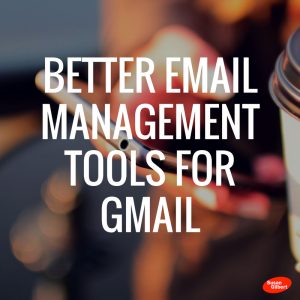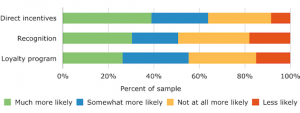— July 14, 2017
Website Design & Navigation

A great website is the cornerstone of a business online. What defines a great website is arguable, but the beauty is in the eye of the beholder. I don’t know about you, but I am bombarded with email and social media messages that make HUGE promises of great profits by being number one on Google. How do I know that they are fake, spammy, and just plain crap? I am making greater profits and I am #1 on Google for my name and business.
Just so you know a little bit about my business: when I first started it, I was a web developer. Now, I still develop websites. It’s usually part of an overarching strategy session, meaning that we’re trying to come up with an online marketing strategy, but a lot of times, it just starts with people saying, “Hey, I need a new website,” and then we kind of move on from there. They understand that there’s more to it than just building a website. I had such a call today from a new prospect. She was referred by a trusted friend and wanted to do a website rebuild!
This lady had a friend of a friend build the website, and she was not offended when I said, “Hey, 1990 called, and they want their website back” — because it was just that bad. She wasn’t offended. She said, “Yeah. No, just I hate it. It doesn’t look good.” Then, we started getting into conversations about strategy. She said, “Well, how do you design sites? Can you send me some samples?” I said, “Yeah. It’s not a problem. I do that all the time.”
I really wanted her to understand the big picture. One of the questions she had started asking me is, “What about those, you know, big long websites? Everybody seems to be designing those today.” I thought I would bring in a little bit of strategy that may help you when you’re starting to think about rebranding and rebuilding your website. I’m certainly not asking you to call me. Maybe you can do it yourself. Maybe you’ve got somebody locally that you work with, know, like, and trust. This is more of an informational post that’s going to give you some ideas and insights as to why you want to design a certain way, and that design really does make a difference, but primarily, it’s about the navigation.
Modern Website Options

There are really two camps at this point online. Pretty much everybody is using WordPress. Joomla is still available. Don’t do Joomla. They get hacked all the time. Drupal is for those monster websites. When you’ve got a big corporation that needs some heavy-duty hitting, Drupal sites are really, really great, but they need maintenance and they need somebody to keep an eye on them all the time. That’s for the big boys. The vast majority of us small- and medium-sized businesses are using WordPress.
There are two different ways to do it. There is the traditional way, in which you have a home page and you have all the other pages that you need. I’ve had a handful of podcasts and posts about this, The Top Five Pages that Every Website Should Have, but generally speaking, you have a home page, then you click on the next one, then you click on the next one, and you end up on the contact us page.
Now, a lot of people are designing these one-page websites to avoid the menu, which is that little square box in the corner, and most people don’t even know that when you click on it, it brings up the menu. A one-page website is really designed around mobile. That means instead of having to go from page to page to page, you have all your content on one page.
Mobile vs. Desktop

There’s a lot of conflicting information out there saying mobile is overtaking desktop. In certain areas, it is — using apps, absolutely. But as far as website usage, I’m finding something different. I’ve also researched this and it shows that about 60% of the time, people are on desktop; the other 40% of the time, they’re on mobile, and that 40% includes a combination of mobile phones and tablets. I can verify that trend with some Google Analytics that I’ve put together and I’ve also looked at a whole bunch of other websites that I’ve designed. It could be as high as 70-80% desktop and 30-20% on mobile and tablet. It really depends on the website, the content, and the audience, and that’s really the key thing is who are you trying to reach.
If you’re designing specifically for millennials, people that just want it on one page, and people who will just scroll through that information, then that one-page website design is awesome. If you’re dealing with people in their 40s to their 70s or above, they’re used to clicking through the menus, but they’re not searching as much on mobile as we may think.
Google Love
The other thing you have to think about is how important is it for your business and your website to be indexed by Google. Google does some very specific things, and is very search focused; what it’s looking for is a web page that answers the question when somebody searches for a specific topic. When you do a one-page website, all of your stuff is loaded on one page, and it really dilutes the ability for somebody to find that one specific topic. If you do the traditional version of website, that means you’re going to try to create one page per topic, especially the top things that you want to be found for.
For example, you could list out all your services on the services page, but maybe focus on the top three things that you want to be known for on individual pages. When somebody is searching for a specific thing that you do which is semi-unique, you have a page that is focused on just that and has keywords and information and is being seen by a lot of people on that specific topic. The keywords that you put on that page are incredibly important, meaning inside the title, inside the subtitles, on the page itself, and a little bit on the SEO. If part of your marketing strategy is getting found through Google searches, having a page with specific information and having a traditional website is uber important.
Your Perfect Customer
You have to start asking yourself some questions. Who are you trying to reach? If your audience is primarily millennials or younger, then maybe having that one-page website is the right answer for you. The question is, will they take advantage of a call-to-action and actually do something with it? As you’re designing that page, are there calls-to-action throughout to text us, to contact us, to call us, do something where they’re actually going to take action? Because otherwise, they’ll read it and then move on to the next one. If you don’t tell people what to do, they certainly won’t do it, especially millennials. They need to be led by the hand to say, “If you want to learn more, text us at this number.” They love that.
If you’re trying to reach the 40 and over market, chances are those people are going to be on their desktops, and they like the ability to navigate to where it is that they want to go. Even better, if you can drive people to the specific page that answers their question without making them go through the homepage to the about page to the services page to the next one, you’re going to end up in a much better position.
I’ve got a lot of research inside of Google Analytics that shows that the average business website will get about two clicks and two minutes worth of attention, and that’s it. If you have a one-pager, you’re going to get a little more attention. Is it going to answer the questions of your audience? That depends who your audience is.
Final Thoughts

I want to leave you with a handful of final thoughts. Think about this. The most important thing when you’re designing and developing a website is understanding who your audience is, what their tendencies are, and what they want. Ultimately, you want to get them to the page that answers their questions, and is indexed by Google so that when people are searching Google, they might find your page and end up on it, and then act on a call-to-action. What’s next? Do you want more information? Would you like a phone call? Maybe even add a text button there, if that makes sense.
The next thing you have to think about is, what do you want people to do when they end up on a web page? What call-to-action do you need them to take? Really think through the process. Think through the funnel. Think through what they want to do and what you want them to do and make it easy; tell them, “Click here to get your answers or ask questions.”
Then the final thing: if Google search is important to you, make sure your pages answer your clients’ questions first and the keywords make it searchable and indexable by Google.
I would love to hear your thoughts about design, navigation, and how it resonates with your customer and your business! I am sure you have thoughts and comments on this subject. Comment below and share if you have developed a strategy or system that has helped you grow your business!
Digital & Social Articles on Business 2 Community
(38)








